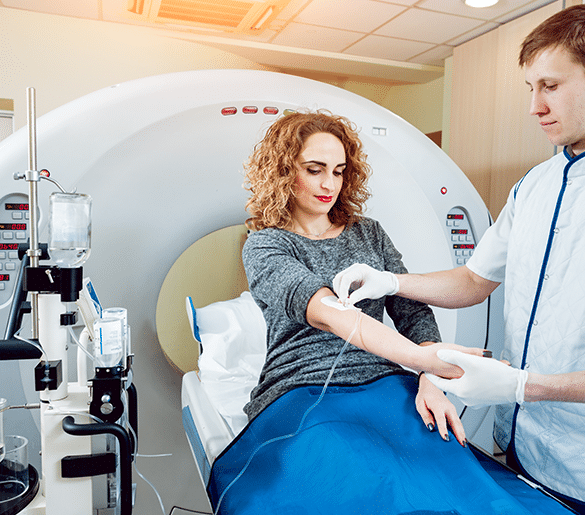Pain is a complex experience that can significantly affect an individual’s quality of life. While traditional pain management approaches often rely on medication and invasive procedures, a growing body of evidence supports the role of exercise as an effective and complementary strategy for managing pain. This comprehensive guide explores how exercise can alleviate various types of pain, the underlying mechanisms, and practical recommendations for incorporating physical activity into pain management strategies.
Understanding Pain and Its Mechanisms
Pain can be classified into two main categories: acute and chronic.
Acute Pain: This type of pain is temporary and usually results from injury or surgery. It serves as a warning sign for the body, signaling the need for protection and healing.
Chronic Pain: Defined as pain that persists for three months or longer, chronic pain often has complex causes, including conditions such as arthritis, fibromyalgia, and neuropathy. It can lead to significant emotional distress, disability, and a reduced quality of life.
Understanding these distinctions is crucial for developing appropriate exercise strategies tailored to individual needs.
How Exercise Helps Manage Pain
1. Reduces Inflammation
Regular physical activity has been shown to reduce levels of inflammatory markers in the body. Exercise can promote circulation and lymphatic drainage, aiding in the removal of inflammatory substances. This effect is particularly beneficial for individuals with conditions like arthritis, where inflammation contributes to pain and joint stiffness.
2. Strengthens Muscles and Improves Flexibility
Weak muscles and poor flexibility can exacerbate pain conditions, particularly in the back and joints. Exercise strengthens the muscles surrounding painful areas, providing better support and stability. Additionally, stretching exercises improve flexibility, which can enhance range of motion and reduce stiffness.
3. Enhances Pain Tolerance
Engaging in regular physical activity can increase the body’s tolerance to pain. Exercise stimulates the release of endorphins, which are natural painkillers. This biochemical response can create a feeling of euphoria, often referred to as the “runner’s high,” and can help mitigate the perception of pain.
4. Improves Mental Health
Chronic pain often coexists with anxiety and depression. Exercise has well-documented psychological benefits, including reducing symptoms of anxiety and depression, boosting mood, and improving overall mental well-being. By addressing the emotional aspects of pain, exercise can create a positive feedback loop, helping individuals manage their pain more effectively.
5. Promotes Better Sleep
Pain can disrupt sleep, and poor sleep can exacerbate pain. Regular exercise can improve sleep quality and duration, helping the body recover and manage pain more effectively. Even moderate physical activity during the day can lead to better sleep at night.
Types of Exercise Beneficial for Pain Management
Different forms of exercise can be beneficial for pain management, and the best choice depends on individual needs and preferences. Here are some effective types:
1. Aerobic Exercise
Low-impact aerobic activities such as walking, cycling, and swimming can increase cardiovascular fitness without placing excessive strain on the joints. These activities help improve blood circulation, reduce stiffness, and boost overall energy levels.
2. Strength Training
Incorporating resistance exercises can help build muscle strength, which is essential for stabilizing joints and reducing pain. It’s important to start with lighter weights and gradually increase resistance under the guidance of a healthcare professional or certified trainer.
3. Flexibility and Stretching Exercises
Yoga and Pilates are excellent for improving flexibility and promoting relaxation. These practices can help alleviate tension in muscles, improve posture, and enhance the overall sense of well-being.
4. Mind-Body Exercises
Activities like Tai Chi and Qigong combine gentle movement, meditation, and deep breathing, promoting relaxation and pain relief. These practices can help improve balance and flexibility while reducing stress and anxiety.
5. Functional Movement Training
This type of training focuses on improving movements used in daily activities. It can help individuals with chronic pain regain functional abilities, enhancing quality of life and independence.
Practical Recommendations for Incorporating Exercise
1. Consult a Healthcare Professional
Before starting any exercise program, especially for those with chronic pain, it is essential to consult with a healthcare provider or physical therapist. They can help design a personalized exercise plan that considers individual conditions, limitations, and goals.
2. Start Slow and Progress Gradually
Begin with low-intensity exercises and gradually increase duration and intensity as tolerance improves. It’s essential to listen to your body and avoid pushing through pain.
3. Set Realistic Goals
Establishing achievable goals can help maintain motivation. Focus on small, incremental progress rather than striving for perfection. Celebrate accomplishments, no matter how minor they may seem.
4. Stay Consistent
Consistency is key to reaping the benefits of exercise. Aim for regular sessions, whether daily or several times a week, and consider incorporating a variety of activities to prevent boredom.
5. Incorporate Mindfulness Practices
Combining physical activity with mindfulness techniques can enhance the pain-relieving effects of exercise. Practices such as deep breathing, visualization, or meditation can help individuals stay focused and present during their workouts.
6. Monitor Pain Levels
Keep a pain diary to track changes in pain levels related to different activities. This can provide insight into what types of exercise are most beneficial and help inform future decisions.
Conclusion
Exercise plays a vital role in pain management, offering a multifaceted approach that addresses the physical, emotional, and psychological dimensions of pain. By incorporating regular physical activity into pain management strategies, individuals can improve their overall well-being, enhance functional abilities, and reduce reliance on medications. As research continues to unveil the profound benefits of exercise, it is increasingly recognized as a cornerstone of effective pain management, empowering individuals to take control of their pain and lead healthier, more active lives.



